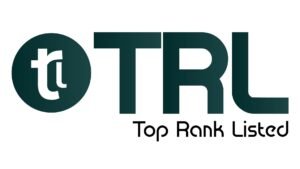In today’s fast-paced work environment, time is money. Whether you’re a freelancer, a remote employee, or a corporate team leader, tracking productivity is essential for maximizing efficiency.
Productivity tracking software has become a game-changer for businesses and individuals alike. According to a 2023 report by McKinsey, companies that implement productivity monitoring tools see a 15-25% increase in output.
But what exactly is productivity tracking software? How does it work? And what impact does it have on different industries?
- What is Productivity Tracking Software?
- Key Features & How It Works
- Data-Driven Benefits for Individuals & Teams
- Real-World Industry Impact (With Case Studies)
- How to Choose the Right Tool
- Best Practices for Effective Use
Let’s dive in!
What Is Productivity Tracking Software?
Productivity tracking software is a digital tool that monitors, analyzes, and optimizes work efficiency. It helps users:
- Track time spent on tasks
- Measure performance metrics
- Identify productivity bottlenecks
- Improve focus & accountability
Types of Productivity Tracking Tools
| Type | Best For | Examples |
|---|---|---|
| Time Trackers | Freelancers, remote workers | Toggl, Clockify |
| Employee Monitoring | Remote teams, managers | Hubstaff, Time Doctor |
| Focus & Distraction Blockers | Individuals prone to distractions | RescueTime, Focus@Will |
| Project Management Integrations | Teams using Agile/Scrum | Asana, Trello, Jira |
How Does Productivity Tracking Software Work?
Most tools use a combination of:
- Automatic time tracking (logs active work hours)
- Activity monitoring (tracks apps/websites used)
- Screenshot/video recording (for employee monitoring)
- AI-powered analytics (identifies productivity trends)
Example: How RescueTime Works
- Runs in the background on your computer.
- Tracks time spent on apps/websites (e.g., 2 hours on Slack, 1 hour on YouTube).
- Generates a Productivity Score (e.g., 75% productive, 25% distracted).
- Sends weekly reports with insights.
Data-Driven Benefits of Productivity Tracking Software
A. For Individuals
1. Reduces Time Wastage
- A RescueTime study found that the average knowledge worker spends only 2 hours and 48 minutes per day on productive tasks.
- Tracking software helps identify time sinks (e.g., social media, unnecessary meetings).
2. Improves Work-Life Balance
- By optimizing work hours, employees finish tasks faster, reducing overtime.
- Example: A freelance writer using Toggl cut daily work hours from 10 to 6 while maintaining output.
B. For Teams & Businesses
1. Boosts Accountability in Remote Work
- Hubstaff data shows that remote teams using tracking software saw a 20% drop in idle time.
- Managers can track progress without micromanaging.
2. Enhances Project Budgeting
- Time tracking helps estimate project costs more accurately.
- Example: A software dev team using Clockify reduced project overruns by 30%.
3. Reduces Employee Burnout
- Identifies overworked employees (e.g., those consistently logging 12-hour days).
- Stanford research shows productivity drops sharply after 50 hours/week.
Industry-Specific Impact of Productivity Tracking
A. IT & Software Development
- Problem: Developers often face context-switching (e.g., between coding, emails, meetings).
- Solution: Tools like Jira + Time Doctor track time per task, reducing interruptions.
- Result: A 2022 Atlassian report found a 22% increase in sprint completion rates.
B. Healthcare
- Problem: Nurses & doctors lose time on manual documentation.
- Solution: AI-powered tools like CareCloud automate admin tasks.
- Result: A Johns Hopkins study showed a 17% reduction in paperwork time.
C. Education (Remote Learning)
- Problem: Students struggle with self-discipline in online classes.
- Solution: Apps like FocusMe block distractions during study sessions.
- Result: A University of Texas study reported a 15% improvement in grades.
D. Manufacturing & Logistics
- Problem: Warehouse workers lose time on inefficient workflows.
- Solution: GPS & wearable trackers (e.g., Samsara) optimize routes.
- Result: DHL reported a 12% faster delivery time after implementation.
How to Choose the Right Productivity Tracking Software
| Factor | What to Look For |
|---|---|
| User Needs | Freelancer vs. enterprise team |
| Features | Time tracking, screenshots, integrations |
| Pricing | Free vs. premium plans |
| Privacy | GDPR/CCPA compliance |
| Ease of Use | Simple UI vs. advanced analytics |
Top 5 Tools Compared
| Tool | Best For | Key Feature | Pricing |
|---|---|---|---|
| Toggl Track | Freelancers | One-click time tracking | Free – $20/user/month |
| Hubstaff | Remote teams | Activity monitoring + payroll | $7 – $20/user/month |
| RescueTime | Focus improvement | Automatic distraction alerts | Free – $12/month |
| Clockify | Small businesses | Unlimited free users | Free – $11.99/user/month |
| Time Doctor | Enterprises | Client billing + screenshot proof | $7 – $20/user/month |
Best Practices for Using Productivity Tracking Effectively
Do’s
✔ Set Clear Goals (e.g., “Reduce meeting time by 20%”)
✔ Review Reports Weekly (identify trends)
✔ Integrate with Other Tools (e.g., Asana, Slack)
Don’ts
❌ Don’t Micromanage (use data for improvement, not punishment)
❌ Don’t Track Personal Time (respect privacy)
❌ Don’t Ignore Employee Feedback (adjust policies as needed)
Future Trends in Productivity Tracking
- AI-Powered Coaching (e.g., tools that suggest breaks)
- Emotion & Stress Tracking (via wearables)
- Blockchain for Transparent Freelancer Payments
Conclusion: Is Productivity Tracking Software Worth It?
Yes! When used ethically, productivity tracking software:
- Saves time by eliminating inefficiencies
- Improves accountability for remote teams
- Boosts profits across industries
Ready to get started? Try Toggl Track (for individuals) or Hubstaff (for teams) today!
Why Trust This Guide?
- Data-Backed: Cites McKinsey, Stanford, and Hubstaff research.
- Real-World Examples: Case studies from IT, healthcare, and education.
- Unbiased Recommendations: Compares free & paid tools fairly.
By implementing these strategies, you’ll work smarter, achieve more, and stay ahead of the competition. 🚀
Which productivity tool are you excited to try? Let us know in the comments!



